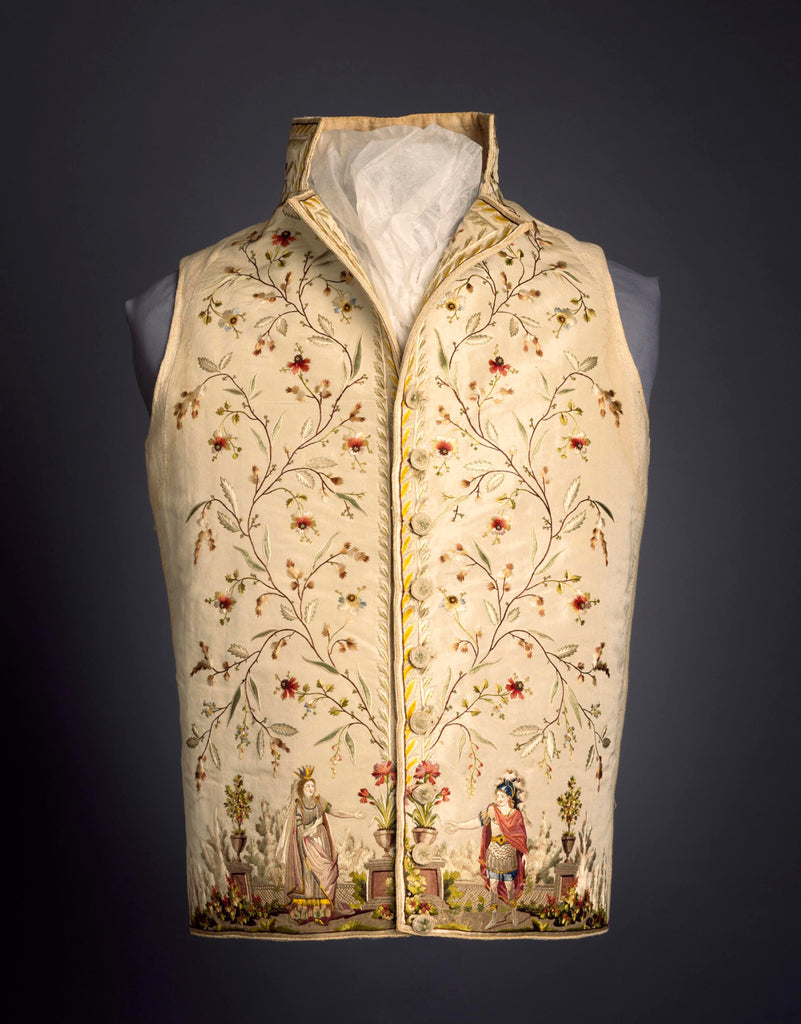The History of Silk: A Journey through Time & Luxury

Silk is a rather paradoxical fabric. It’s prized for use in refined garments, yet derived from a simple insect! At once delicate, it's also strong and durable. It wows with its luxurious luster, yet is comfortable and breathable.
Gentlemen of distinguished taste tend to have a fair bit of silk in their wardrobe but seldom reflect on the questions of what is silk and why is silk important?
Let’s unravel the mysteries of this remarkable fabric by exploring the history of silk, delving into its path to becoming a prized trade commodity, and its enduring significance in the modern world.

The History Of Silk
The history of silk, the queen of fabrics, dates back 5,000 years to ancient China.
According to legend, Empress Leizu was enjoying a cup of tea under a majestic mulberry tree when a cocoon fell into her cup, unraveling into a long thread. Appreciating its properties and potential, the Empress instigated the cultivation of a mulberry grove, developed the silk reel to join the filaments into thread, and invented the first silk loom. Perhaps, then, it can be said that it was Empress Leizu who invented silk, but it would be more fair to say she discovered it.

Engraving of silk manufacturing in China, stretching the silk threads on a loom, 16th century.
Sericulture – the cultivation of silkworms for the production of silk – became an important part of China's economy and culture. The Silk Road, a network of trade routes that connected China to the Mediterranean, played a crucial role in the spread of highly-prized Chinese silk and served to promote an exchange of ideas, technologies, and cultures. If the Silk Road was the end of the story, it would be easy to see why silk was so important, but of course, it was just the beginning.
By the time it reached Medieval Europe, silk had transformed into a symbol of opulence and prestige. It became synonymous with high fashion, adorning nobility and aristocracy. The Renaissance period then saw an explosion of silk usage in garments, tapestries, upholstery, and art, shaping the cultural landscape of the time.

Example of an embroidered silk waist coast, France, 1785.
The uses of silk continued to evolve and silk's association with luxury endures in the modern world. From premium bedding and medical textiles to skincare products and even the uncharted territories of biodegradable electronics, silk's unique qualities make it a sought-after material in industries beyond fashion. Its smoothness, breathability, and hypoallergenic properties contribute to its ongoing appeal.
How Silk Is Made
Silk production in ancient times was a labor-intensive process.
Specially bred silkworms were raised on mulberry leaves and, once a certain size, would spin a continuous strand of silk around themselves to form a protective cocoon, sometimes over three feet in length.
To harvest the silk, the cocoons were carefully collected before the moths emerged and then gently boiled to soften the sericin, the natural gum-like substance that holds the silk threads together. Skilled artisans then spun these fibers into the finest thread, ready to be woven into luxurious fabrics.

Silk production today is theoretically the same, though modern methods involve more controlled environments and specialized breeding programs to ensure high-quality silk production. Instead of boiling the cocoons, steam or applications of hot water helps to soften the sericin, making it easier to unravel the silk fibers. Advancements in machinery and automation have also streamlined the production, allowing for more efficient reeling and processing of silk threads.
Once spun, woven and dyed, the silk is carefully finished to enhance its texture, luster, and overall quality. This may involve treatments like bleaching, sizing, or polishing.

The Role of Silk in Menswear
Silk has played a significant role in menswear for centuries, bringing a touch of elegance, comfort, and luxury to various clothing items.
Silk and silk blend suiting and garments are lightweight and breathable, adapting to the body with gentle ease. The natural fibers of silk help regulate body temperature, keeping the wearer cool in hot weather and warm in colder temperatures.

Man wearing a lavishly decorated traditional silk thobe, Arabian Peninsula.
As we well know at R. Hanauer, silk bow ties hold their shape beautifully, silk neckties produce intricate, handsome knots, and silk pocket squares drape with perfection.
Silk adds stunning sophistication and polish to every facet of a gentleman’s wardrobe, from casual looks and office-ready ensembles, to cocktail hour outfits and the most formal of dress codes.

What role does silk play in your life? Share your favorite silk accessories with us – tag us @RHanauer on Instagram and Facebook! And if you need help procuring the perfect silk pieces, connect with our team or visit our shop in Fort Mill, SC.
Interested in More Menswear and Fabric History?
Menswear is steeped in history and tradition! Explore our blog, The Gentleman’s Guide, and feel free to suggest topics you are keen to learn about.
- The History of the Bow Tie
- The History of the Tie
- Unlock the Power of Style with Cufflinks: When & How to Wear Them
- Liven up Your Fall Style With a Paisley Tie or Bow Tie
- Regimental Ties: A History
- The History of Tartan
- Ivy League Style 101
- Is The Handkerchief Dead? Exploring the Practicality and Style of a Timeless Accessory
- What Is Grosgrain?
- Tweed: A Look at the Timeless Appeal and Versatility of this Iconic Fabric
- Seersucker: What It Is, How to Wear It & How to Care for It
- Madras Fabric: What It Is and Why You Should Wear It
- Liberty London Fabric: A Fashion Tale
- The History of the Floral Bow Tie

